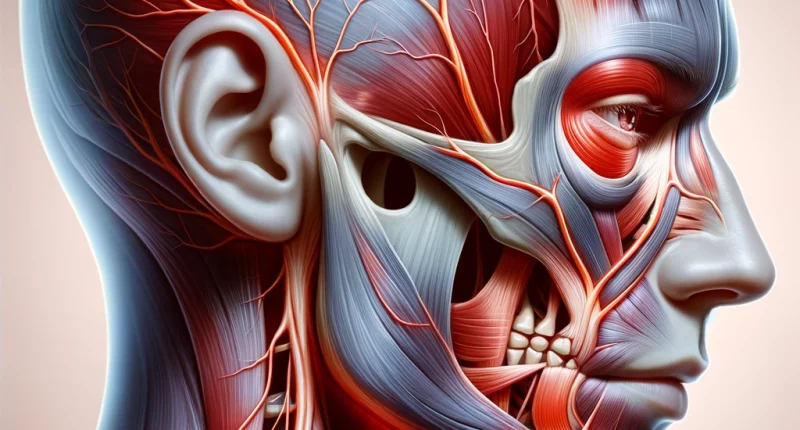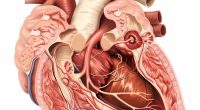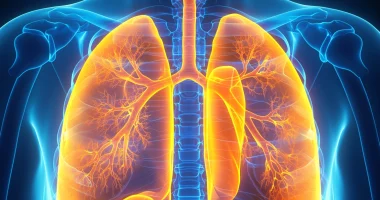Trigeminal neuralgia
What is trigeminal neuralgia?
Neuralgia of the trigeminal nerve is the most common cause of pain in the facial part of the skull. The development of pathology is associated with the lesion of peripheral nerves. The disease can be suspected by intense burning pain in the right or left side of the face, which has an attack-like character, and by the violation of skin sensitivity.
As a rule, neuralgia of the trigeminal nerve affects the adult population. In children and adolescents, the disease is sporadic. Faced with the symptoms of the disease, a person cannot lead an everyday life and often becomes temporarily incapacitated.
Self-diagnosis of pathology is extremely difficult because of the nonspecific symptoms inherent in many diseases (for example, dental). That is why it is necessary to consult a neurologist promptly if any unpleasant sensations in the facial area occur.
Symptoms of trigeminal neuralgia
The most striking manifestation of neuralgia is pain in the facial part of the head. The localization of pain depends on the innervation zone of the branch of the inflamed nerve. Symptoms often occur in the cheeks and lower jaw, less and more often in the forehead and eyes. In this case, the pain increases with the slightest movements of facial muscles, becoming unbearable. Note that in trigeminal nerve inflammation, taking analgesics does not relieve severe pain.
Features of the course of trigeminal neuralgia:
- The nature of the pain is burning, attack-like, often resembling an electric shock.
- Soreness increases with movement of the facial muscles, touching the inflamed area, and under the influence of bright light, loud sound, noise, etc.
- The pain subsides periodically, and the person may mistakenly believe that the disease has let go.
- The disease is accompanied by partial or complete loss of sensitivity of the skin area near the affected nerve and decreased blink reflex.
- In addition, facial pain may be joined by severe headaches and sleep disturbance.
- The patient often has manifestations of neurosis – irritability, anxiety, nervous tic.
A prolonged course of the disease negatively affects a person’s well-being and state of health. If untreated, neuralgia can be complicated by nerve inflammation and muscle atrophy.
Causes of trigeminal neuralgia
The leading cause of the disease is the following: the trigeminal nerve passes through a narrow opening in the skull box, from which it can become compressed by surrounding tissues. The most common causes of pathology:
- Overcooling of tissues in the facial area. When hypothermia occurs, blood circulation is impaired with stagnation of venous blood and slowing of metabolism in a particular area.
- Aneurysm. An aneurysm is an area of enlargement of one of the arteries in the skull cavity. The enlarged artery may compress the trigeminal nerve, causing unpleasant symptoms.
- Abnormal location of cerebral vessels, as a result of which they can compress the nerve.
- Injuries and congenital defects of the facial bones. Various fractures and physiologically abnormal structures of the facial part of the skull can produce pressure on the passing nerves.
- Chronic diseases in the facial area – carious lesions of teeth, periodontitis, chronic maxillary sinusitis, etc.
- The presence of benign or malignant neoplasms in the facial area.
- Multiple sclerosis is a complex pathology characterized by the destruction of the myelin sheath of the nerve.
- Atherosclerosis is a disease accompanied by impaired blood circulation in the brain’s blood vessels.
- Undergone surgical interventions at the site of the trigeminal nerve.
At the same time, the pain may not occur immediately. Manifestations of the disease develop under the influence of certain factors: brushing teeth, eating food, firm touch, etc.
Diagnosis of trigeminal neuralgia
Referral to an experienced specialist at the first pathology symptoms is the primary step in accurate diagnosis and effective treatment. The initial appointment with a neurologist begins with the collection of anamnesis. At this stage, the doctor listens to the patient’s complaints. A qualified specialist will easily be able to determine the pathology by the acute onset, attack-like character, and alternation of the exacerbation period with the subsiding symptoms. In addition, the disease can be suspected by a precise localization of pain and involvement of only one-half of the face.
During the conversation, the doctor also finds out possible reasons for the development of the disease – the presence of tumors, previous surgeries on the face, trauma, pathologies of nerves and vessels, dental diseases, etc. Then, the doctor examines the patient’s face and, if necessary, conducts palpation. All this helps the specialist to make a preliminary diagnosis, after which the patient is referred for additional tests.
Methodsofinstrumentaldiagnostics:
- MRI or CT scan is one of the most highly informative research methods, allowing the researcher to obtain layer-by-layer images of tissues and anatomical structures of the skull and brain. During the examination, the doctor can detect various tumors, blood circulation disorders, signs of destruction of the myelin sheath of nerves, etc.
- MRI of cerebral vessels with contrast is a high-precision study prescribed to study the structure and functioning of the vascular system thoroughly. Before the procedure, the patient is injected intravenously with a contrast agent for a more accurate study of even the smallest vessels. Diagnosis allows the identification of aneurysms, hemorrhages, and other vascular pathologies that can provoke neuralgia.
In some cases, it may be necessary to undergo other laboratory and instrumental methods of investigation, such as blood tests to rule out the infectious nature of the pain or x-rays of the jaws to rule out dental abnormalities.
Therapeutic treatment
The primary method of treatment of trigeminal neuralgia is drug therapy. Drugs are prescribed to eliminate unpleasant symptoms of pathology, as well as the cause of its occurrence.
Medicationsprescribedforneuralgia:
- Anticonvulsants – eliminate intense pain and blunt hypersensitivity of facial nerves to external stimuli.
- Spasmolytics – promote muscle relaxation, thereby relieving secondary pain syndrome.
- Neuroprotectants – protect nerve cells.
Physical therapy helps to strengthen the effect of drug treatment and prevent complications.
Methods of physical therapy for trigeminal neuralgia:
- Magnet therapy. The magnet stimulates metabolic processes, improves blood supply to the desired area, relieves tone in the facial muscles, and reduces the severity of pain.
- Laser treatment. Laser therapy normalizes blood flow, relieves spasms, reduces pain and inflammation, and has a regenerative effect.
- UHF. Ultra-high frequency therapy activates cellular response and strengthens the body’s defenses. After a course of procedures, the severity of inflammation and pain syndrome is significantly reduced.
Surgical treatment
If the disease is caused by severe internal disorders, drug therapy may not be enough. The only effective way to eliminate the pathology and prevent recurrences is to perform rhizotomy surgery, during which the nerve endings of the trigeminal nerve are partially destroyed.
All these treatment options are available in more than 680 hospitals worldwide (https://doctor.global/results/diseases/trigeminal-neuralgia). For example, Glycerol rhizotomy can be performed in 12 clinics across Turkey for an approximate price of $2.5 K (https://doctor.global/results/asia/turkey/all-cities/all-specializations/procedures/glycerol-rhizotomy).





